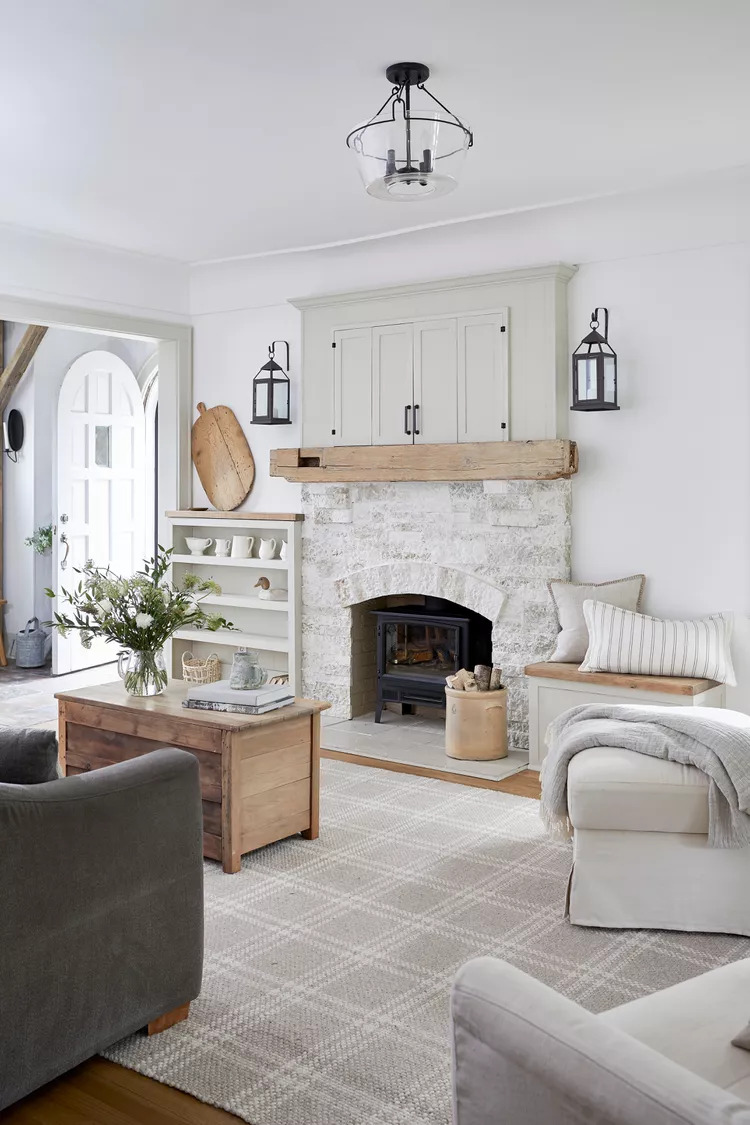In contemporary times, beds have evolved from their rudimentary form into a nuanced combination of a mattress supported by a robust frame. Within the United States, mattresses typically span a breadth of 8 to 18 inches in thickness. Nestled beneath the mattress, the supporting frame takes on diverse roles, varying with each bed type. For instance, Murphy beds exhibit a frame that artfully converges into a wall, necessitating the use of slender mattresses. Conversely, a convertible sofa bed seamlessly transforms into a couch, demanding a mattress of sufficient flexibility. The bunk bed, a design characterized by two beds stacked one above the other, is interconnected by a ladder or staircase. Evidently, beds come in a myriad of designs and dimensions.

Herein lies an exploration of prevalent bed sizes within the market and a catalog of the most favored bed varieties.
Bed Sizes
The width and length of beds vary. The following are the most typical bed sizes and dimensions:
California King: 72″ x 84″ (183 x 213 cms)
King: 76″ x 80″ (193 x 203in cms)
Queen: 60″ x 80″ (152.5 x 203 cms)
Full: 54″ x 75″ (134.5 x 190.5 cms)
Twin XL: 38″ x 80″ (96.5 x 203 cms)
Twin: 38″ x 75″ in. (96.5 x 190.5 cms)
Bed Types
Canopy Bed

Across the annals of history, canopy beds have adorned countless interiors, casting a spellbinding focal point. Distinguished by four imposing posts at each corner, these beds provide the sturdy foundation for the decorative canopy. Often draped in opulent fabrics, they serve as an idyllic refuge in regions plagued by nocturnal insects, particularly in tropical or coastal climes. Furthermore, the presence of heavier canopies can perform the function of blackout curtains, thus augmenting the quality and duration of repose. Present-day iterations of canopy beds introduce a lighter touch with ethereal fabrics, diverging from the heavily draped versions of yesteryears. This dreamlike, tent-like bed archetype engineers an intimate sanctuary within the confines of the bedroom.
Bunk Bed

Bunk beds, structured around a robust bed frame housing two beds, one atop the other, epitomize this bed category. Each corner is fortified with four resolute pillars or posts, with a ladder or set of stairs providing vertical access to the upper bunk. Safety is paramount, underscored by the presence of a protective railing on the upper bunk. The defining virtue of bunk beds lies in their efficiency when it comes to spatial utilization, rendering them the epitome of practicality, particularly within constrained quarters. Typically, these beds accommodate the sleeping arrangements of small children sharing a room. However, a downside to their utilization is the potential peril posed by the connecting ladders. It is imperative to enforce secure guardrails and adequately proportioned steps to forestall mishaps and tumbles.
Sleigh Bed

Sleigh beds, renowned for their curvaceous headboard and footboard, sculpt a signature silhouette. These beds, predominantly crafted from lustrous wood, present a tapestry of designs, ranging from the wooden variety to the tufted and the innovative storage-centric adaptations. Sleigh beds that encompass storage features tend to incorporate drawers on their flanks, rather than the frontal plane.
Futon

Futons, a class of collapsible beds, offer the dexterity to morph from a conventional sofa into a fully-fledged bed. Incredibly versatile, they pivot to cater to diverse needs as the occasion demands. The lineage of the traditional Japanese futon traces its origins back to the 17th century; however, these progenitors resembled roll-away cotton mattresses more than contemporary sofa beds. Modern futons excel in compact settings, offering a cost-effective alternative to conventional beds, ideally suited for transient or transitional spaces. Nevertheless, they may not extend the requisite comfort or support to serve as the primary sleeping arrangement over prolonged durations.
Murphy Bed

Referred to as wall beds, pull-down beds, fold-down beds, or hidden beds, Murphy beds manifest a hinge mechanism on one side, which permits vertical concealment within a wall, closet, or cabinet. The eponymous moniker of these beds derives from William Lawrence Murphy (1876–1959), the luminary inventor who secured his inaugural patent for this innovation around the turn of the 20th century. Remarkably adept at optimizing spatial usage, Murphy beds are the quintessential solution for compact living spaces. However, a substantial caveat looms in their high cost of customization and installation, a direct consequence of the need for anchoring into the wall and the frequent reliance on hydraulic systems to enhance operability.
Platform Bed

Platform beds distinguish themselves by the presence of a robust, flat surface that cradles the mattress and obviates the need for an underpinning mattress foundation or box spring. Their foremost attribute lies in the steadiness they provide. With their proximity to the ground, platform beds maintain a lower center of gravity, thereby rendering them an impeccable choice for individuals who grapple with the inadvertent act of falling out of bed or those confronted by the challenge of raising their limbs to ascend to a taller bed. Moreover, the majority of platform beds come equipped with an invaluable storage cavity beneath the sleeping surface, augmenting their overall utility.
Trundle Bed

Suited to confined living spaces, trundle beds are characterized by a secondary mattress nestled beneath the principal bed. This architectural configuration bequeaths surplus sleeping arrangements, serving the dual purpose of accommodating guests, facilitating sleepovers, or enabling co-sleeping. However, a noteworthy limitation resides in the weight-bearing capacity of trundle beds, as they fall short in the load-bearing department in comparison to standard beds. It is worth noting that trundle beds are available in an array of dimensions to harmonize with varied spatial confines.
Folding Bed

Folding beds, akin to the Mainstays option, proffer an array of space-saving advantages. Comprising a metal frame, these beds incorporate a folding mechanism. The framework, usually svelte and lightweight, facilitates seamless portability. Hotels and hostels are oft inclined to stock these folding beds, catering to the lodging needs of families with young children or groups seeking supplementary accommodations. These beds exhibit a vertical folding capacity, an attribute that renders them eminently mobile and easy to stow away when not in service.
Panel or Box-Spring Bed

Panel beds, often regarded as the archetypal bed genre, rely on wooden slats or metallic rods as load-bearing panels, situated beneath the mattress and its requisite foundation. A subset of panel beds may encompass side rails, footboards, and headboards. It is incumbent upon these beds to enlist a mattress foundation or box spring to support the mattress, a factor contributing to their augmented heft compared to alternative designs. An intrinsic vulnerability exists in the event of structural failings within the support system, which may lead to the gradual deformation of the mattress over time.
Daybed

Daybeds, versatile entities that straddle the boundary between a sofa, a chaise longue, and a bed, offer the dual functionality of seating and repose. Typically tailored to accommodate a twin-size mattress, the headboard often extends across the length of the daybed, resembling the backrest of a commodious sofa. The strategic incorporation of throw pillows and blankets imparts a visual illusion of a generously proportioned couch, but their removal facilitates the seamless conversion into a snug sleeping haven.
Waterbed

For those who navigated the landscape of the 1980s, the memory of reclining on a waterbed likely lingers. The concept of a mattress filled with water seems to present an appealing proposition, ostensibly capable of averting bedsores and mitigating muscular discomfort. Nevertheless, this very attribute, the absence of robust back and leg support, contrives to render water beds an incompatible choice for certain individuals. Noteworthy innovations in this category encompass heating mechanisms designed to confer a soothing, therapeutic dimension and alleviate the stress on aching joints and muscles. Nevertheless, these types of beds have largely waned in popularity, their decline corresponding to the realization of the potential havoc wrought by water leakage.
Convertible Sofa Bed

Convertible sofa beds, frequently confused with futons, bear an uncanny resemblance to conventional sofas, yet conceal a folded mattress within their confines. This concealed mattress is seated upon a distinct subframe, secreted beneath the couch’s exterior. To transition the sofa into a bed, the process necessitates the removal of the sofa’s cushions and the retrieval of the mattress frame from its subterranean hideaway. Though the mattresses are inherently svelte, these beds typically promise a level of comfort and support superior to that of futons.
Airbed

Air beds, occasionally mistaken for air mattresses, rise to a superior echelon of durability and practicality, making them amenable to prolonged domestic deployment. Their ease of utilization aligns with an impressive capacity to ward off pressure-induced sores and facilitate back relaxation. Furthermore, air beds function as space-conserving assets and offer an affordable alternative to traditional beds. However, they grapple with inferior temperature regulation, potentially causing irregular bodily alignment, and bear the vulnerability of puncture.
Ottoman Bed

Hydraulic bed frames find their foundation in hydraulic technology. The upper stratum, designated as the resting place for the mattress, ascends from the foundational bed frame, revealing a storage cavity that abstains from encroaching upon the floor space. Ottoman beds, in addition to their aesthetic appeal, are champions of functionality. Nevertheless, their principal drawback lies in their substantial mass, unwieldiness, and price point. Furthermore, their manipulation often necessitates the collaborative effort of multiple individuals during relocation.
Loft Bed

Resembling bunk beds in their elevated disposition, loft beds consist of one or two beds, complemented by an integrated desk, workstation, shelves, and/or a chest of drawers positioned beneath. These innovative structures economize floor space, making them especially salient within children’s bedrooms. Nonetheless, the elevated altitude of loft beds, akin to bunk beds, gives rise to potential falling hazards, particularly concerning young children and household pets.
Choosing the perfect bed involves considering factors such as bed sizes, types, materials, and mattresses. We hope this guide from [Your Website Name] has provided you with valuable insights to make an informed decision. Your bed is not just a piece of furniture; it’s where you rest, rejuvenate, and dream. Invest in a bed that suits your style and ensures a restful night’s sleep.



